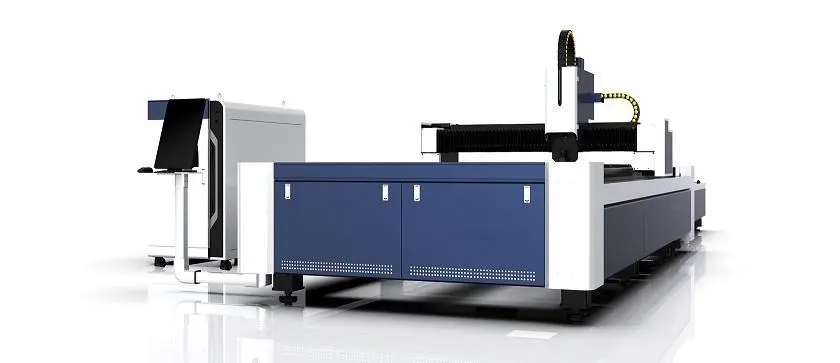
Laser cutting generally has the following main uses:
1) Laser vaporization cutting uses a high-energy-density laser beam to heat the workpiece, so that the temperature rises rapidly, reaching the boiling point of the material in a very short time, and the material begins to evaporate and form steam. The steam is ejected at a high velocity, creating incisions in the material as the steam is ejected. The heat of vaporization of materials is generally large, so laser vaporization cutting requires high power and power density. Laser vaporization cutting is mostly used for cutting extremely thin metal materials and non-metal materials (such as paper, cloth, wood, plastic and rubber, etc.).
2) Laser fusing During laser fusing, the metal material is melted by laser heating, and then a non-oxidizing gas (Ar, He, N, etc.) is ejected through a nozzle coaxial with the beam, and the liquid metal is discharged by the strong pressure of the gas. , forming a cut. Laser melting cutting does not need to completely vaporize the metal, and the energy required is only 1/10 of that of vaporization cutting. Laser melting cutting is mainly used for cutting materials that are not easily oxidized or active metals, such as stainless steel, titanium, aluminum and their alloys.
3) Laser oxygen cutting The principle of laser oxygen cutting is similar to that of oxyacetylene cutting. It uses a laser as a preheating heat source and an active gas such as oxygen as a cutting gas. On the one hand, the blown gas undergoes an oxidation reaction with the cutting metal, releasing a large amount of oxidation heat; on the other hand, the molten oxide and melt are blown out from the reaction zone to form an incision in the metal. Since the oxidation reaction in the cutting process will generate a lot of heat, the energy required for laser oxygen cutting is only 1/2 of that of fusion cutting, and the cutting speed is much higher than that of laser steam cutting and fusion cutting. Laser oxygen cutting is mainly used for easily oxidized metal materials such as carbon steel, titanium steel, and heat-treated steel.
4) Laser scribing and controlled fracture Laser scribing uses a high-energy-density laser to scan the surface of brittle materials, heats and evaporates the material into small grooves, and then applies a certain pressure to make the brittle materials crack along the small grooves . Open. The lasers used for laser scribing are generally Q-switched lasers and CO2 lasers. Controlled fracture uses the steep temperature distribution generated by laser grooving to generate local thermal stress in brittle materials, causing the material to fracture along small grooves.




